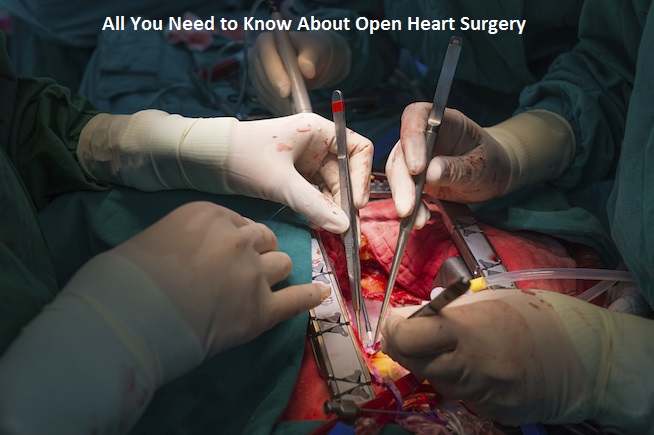

Open heart surgery is performed when the coronary arteries supplying blood to the heart are blocked and is the gold standard treatment for the same. The condition arising due to blockage of the coronary artery is known as coronary artery disease. Open heart surgery is done to regulate the flow of blood through the arteries and prevent damage to the heart. In the procedure, blood vessels from other parts of the body are used to create a bypass. Generally, two to four coronary arteries are grafted for regulating blood flow to the heart.
There are three types of bypass surgeries depending on the number of bypasses done, namely double bypass, triple bypass, and quadruple bypass.
Open Heart Surgery – Open heart surgery is considered only if the blockage is such that placing the stent is not feasible. Also, if there is a severe coronary disease in the left main artery or in multiple arteries and there is a high risk of heart damage. To check the exact blockage scenario cardiac surgeons advise on having complete testing done. An angiogram is used for checking the severity of the coronary disease. The other tests done before and after the surgery include an electrocardiogram (EKG), blood tests, and specific dietary instructions.
During the on-pump open heart surgery, the surgery is performed under general anesthesia while keeping the patient on ventilator support. The primary step in the surgery is harvesting the blood vessels. Generally, the saphenous vein in the leg is used as it is long enough to create multiple grafts. Alternatively, if it cannot be used then vessels from the arm can be used. After the saphenous vein work is done, the chest is opened by making an incision along the breastbone. The surgeon cuts the sternum to gain access to the heart.
In traditional or off-pump CABG procedures, the heart needs to be stopped using potassium so that the surgeon does not have to perform the surgery on a beating heart. The blood circulation is kept on with the help of a heart-lung machine and the ventilator is switched off. The machine then does the work of the heart as well as the lungs. The surgeon either removes the existing blood vessel and replaces the same to remove the blockage or reroutes the blood around the blockage. There could be one or more grafts to be performed. Once the grafting is completed the heart is restarted. The sternum is placed in its original position and closed with the help of a surgical wire. The surgical wire helps in providing strength to the bone for healing. Lastly, the surgeon closes the incision.
On pump, surgery is recommended for unstable patients. The surgeon performs the surgery on a still heart so the process is quicker and even the bleeding is minimal. Alternatively, the cons include inflammation/ clotting after surgery, transfusion, and fluid retention. Though after on-pump surgery the risk of stroke does increase.
Off-pump surgery is very much similar to on-pump except that the blood flow through the body is maintained by the heart only and not the heart-lung machine as in on-pump surgery. The area to be grafted is held with the help of surgical instruments while the heart keeps pumping. This surgery is done on tentatively 20% of the CABG patients undergoing the surgery for the first time.
This surgery is less expensive surgery compared to on pump and it also reduces the risk of stroke. Also, blood loss and transfusions are less compared to on pump. The hospital stays required is also less. 70% of the patients are not recommended to do the surgery due to the condition. The surgery is not recommended for unstable patients.
Recovery
The recovery period includes staying in the Intensive care unit for 24 hours. The chest tubes are removed post 48 hours and then the patient is shifted out of ICU. Once the patient is awake the breathing tubes are removed so that the patient can breathe on his/ her own. Though supplemental oxygen may be given through the nose to help with breathing. The patient will be monitored closely and if he/she is unable to breathe, the breathing tube might be inserted again. Once the patient starts breathing on his/her own, swift rehabilitation steps are put into place. This includes sitting up on the edge of the bed, walking while taking care of the wound and preventing pain, etc.
Life Expectancy
The life expectancy has greatly increased over the years up to 98% of people undergoing the surgery can easily lead a normal life as that of the others who haven’t undergone any surgery.

 Emergency Number
Emergency Number